A gift from Maharajas to Mysore Police Band
By S.T. Ravikumar
[Pics. by M.N. Lakshminarayana Yadav]
Music reverberates in every corner here. Welcome to the Mounted Police Company on Lalitha Mahal Palace Road which is home for the rarest of the rare musical instruments, both Indian and the Western — a gift from the Maharajas.
You are not welcome here as it has not yet been opened to the public. But gradually, the museum will be thrown open for all once it is shifted to the ‘Band House’, the Old Mysore City Police Commissioner’s Office at Nazarbad.
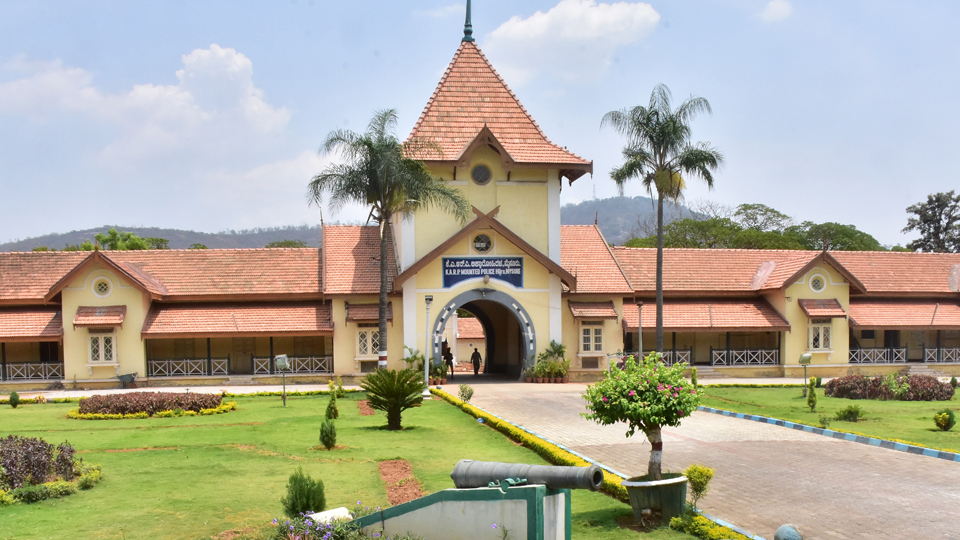
History of a different nature lives here and the rooms house lost treasures of India’s old musical traditions. While some of these forms and instruments made their way to the present and got their share of mainstream fame quite successfully, there are others that could not cross that line between then and now.
Star of Mysore literally sneaked into the corridors of Karnataka Armed Reserve Police (KARP) and the Mounted Police Company to get you this story and we went nosing around the neatly arranged and well-maintained vintage musical instruments museum. If opened to the public, it would surely be a must-visit for any tourist or for that matter anyone who is interested in music.
A majority of the instruments preserved and maintained here still produce that impeccable sound that no other modern technologically superior musical instrument can produce. Their sound is unique and there is no match. Many of the instruments are more than 150 years old. These instruments formed a priced collection in the Mysore Palace and the benevolent Maharajas handed over the rare instruments when the Mysore Police Band was formed way back in 1868.
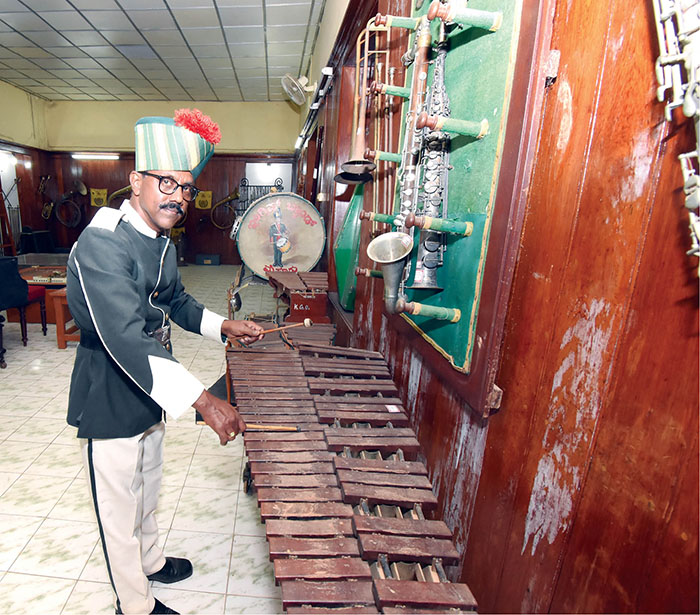
The museum saw its opening on 28.1.1985 during the term of the then Director General and Inspector General of Police B.N. Garudachar. There are over 200 musical instruments that were once used to play the musical notes composed by Chamaraja Wadiyar. Among the instruments, seven are extremely rare and only a couple of pieces can be found in other museums in the world.
Sound of Music from Police Corridors
1. Nototyp Music Typewriter
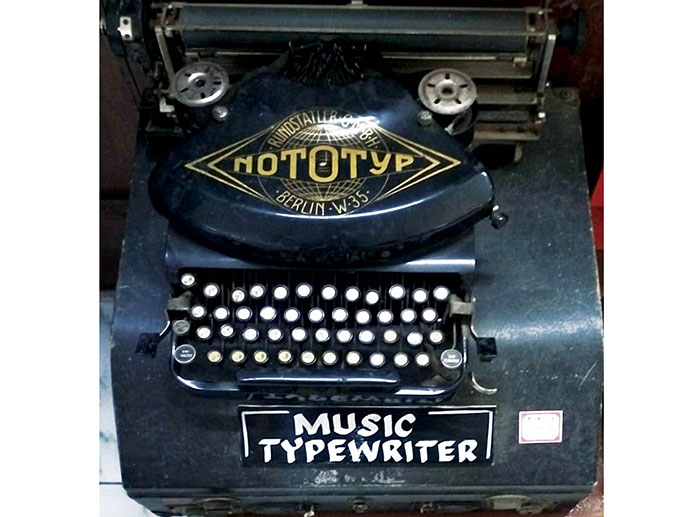
According to records from the German National Archives, Nototyp is a typewriter which makes it possible to put music notes on paper. It was invented by Gustave Rundstatler in Berlin.
A patent filed in the United States bears the name of Rundstatler, an engineer of Frankfort-on-the-Main, with an application date of September 24, 1936. He apparently had applied for a German patent in 1933 and was also patented in Britain.
The musical instrument exactly resembles an ordinary typewriter except that the common keyboard is replaced by one of special design to write musical notes. With Nototyp, notes could be easily and quickly written as exactly as one would play them on the keyboard of a piano.
In total, only 10 machines were produced, with five exported to the United States of America. The machine has 44 keys and could print 88 notes or music symbols. Keys were colour-coded to indicate various functions.
2. Stroh Horn Cello
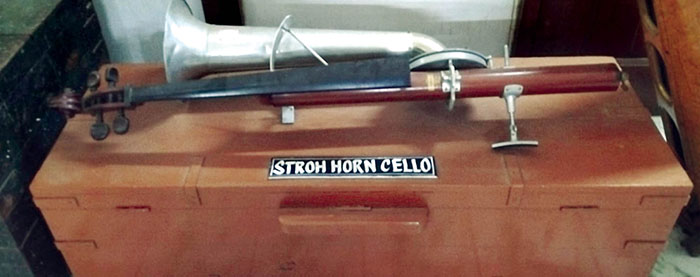
It is a violin with a horn. Yes, horn. It is a violin with a megaphone horn instead of the normal sound box. This violin was probably one of the first important steps in the evolution of string instruments. It was invented in the 19th Century by Augustus Stroh, a German national who worked as an apprentice watchmaker. It is a four-string violin which Stroh had replaced the elegant wooden sound box with a diaphragm and a startlingly large metal horn.
Designing the violin, Augustus took off the bit of wood that makes up the body and it just has the neck, fingerboard, the pegbox and the strings. Attached to the body of the instrument is a large, conical aluminium horn from where the sound comes out.
When the strings of the violin are touched with a bow, it causes vibration and the sound is transmitted via a thin stem to the horn. This violin was widely used on stage in the 19th Century and there is photographic evidence to prove that.
3. Piano Accordion
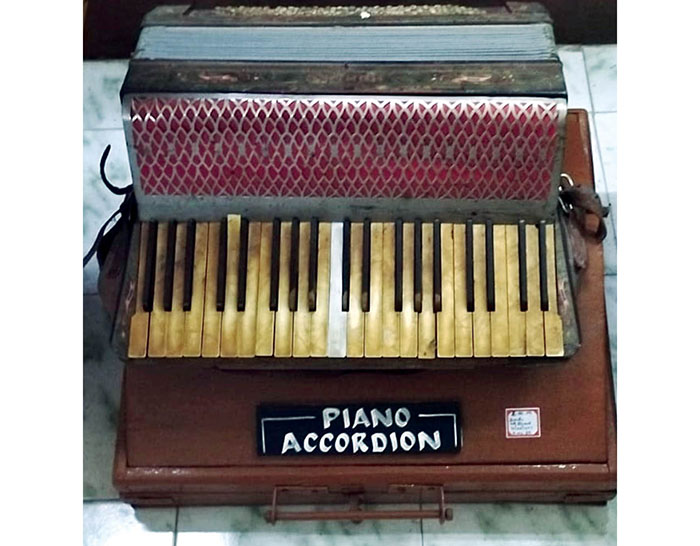
The term Accordion originates from the German word ‘akkord’ meaning musical chord or concord of sounds. They come in a variety of shapes, sizes, colours, and aesthetic designs and they are extremely popular in Brazil, Chile, Scotland, South Africa, the USA, Uruguay, New Zealand, Australia, Scandinavia, France, and Belgium. Piano accordions are perhaps the most well-known accordion system and are often the choice of pianists and organists who enjoy the familiarity of the piano-style keyboard.
Piano Accordion made its first appearance in the 1800s and both Germans and Russians have claimed to be its inventors. As years passed, many improvements were made to the design and sound. The instrument became enormously popular in the 1930s.
4. Sarangi and the Taus
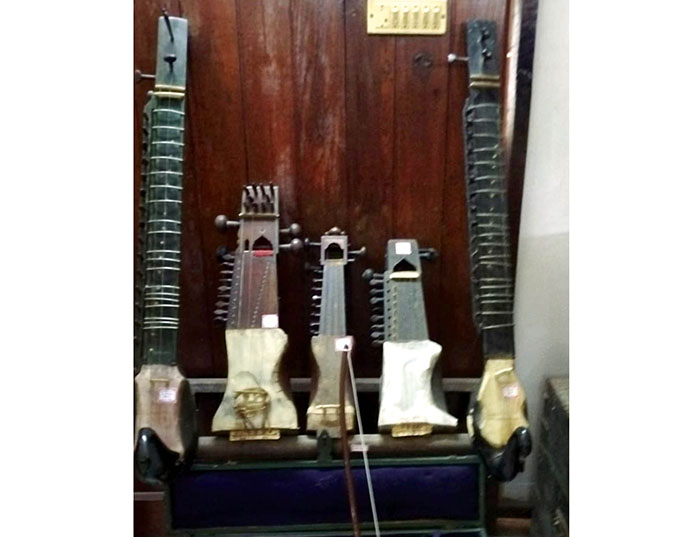
Like a violin, the Sarangi is played with a bow but unlike the violin, the Sarangi is held vertically with the sound chamber below. The instrument is usually carved out of a single block of wood and its hollow belly is covered with parchment. Sarangis have a rich tradition and have a special place in folk and tribal music and various types of Sarangis are found with region-specific modifications.
At this museum, there are three Sarangis that were predominantly procured by the Maharajas from North India. The instrument was quite popular in the mid-17th century to accompany vocal music. Sarangis are also called the instruments of hundred colours or the voice of hundred colours.
Along with the three Sarangis, there are two rare Taus at the museum. Taus means peacock in Persian and its Sanskrit name is Mayuri Veena — it is carved in the shape of a peacock. The Taus is played with a bow and has moveable frets like the sitar. The lower end of the instrument stands on the floor supported by the carved peacock’s feet. The peacock’s body forms the sound chamber and it produces quite a loud sound. There is a sound hole where the tail feathers are affixed. Records available say that the origin of the Taus is from the Punjab region in the early nineteenth century where courtesans would dance to the tunes. The instrument was associated with the Sikh saints and was mainly used in devotional music. In fact, it is believed that Taus is the creation of one of the Sikh Gurus.
5. Grecian Harp
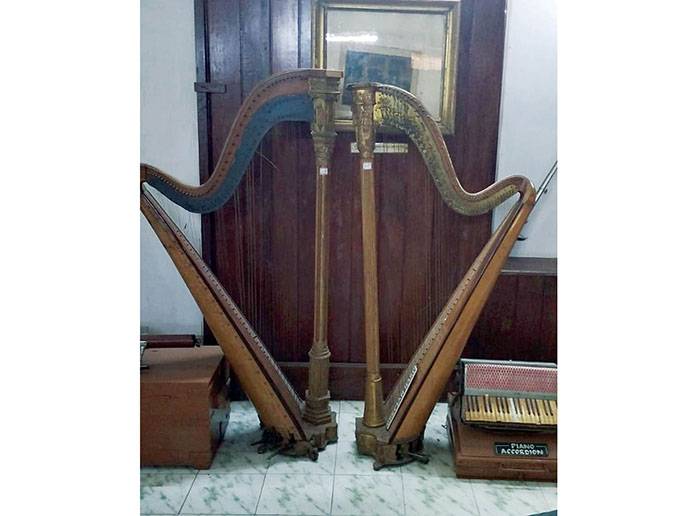
There are two Grecian Harps in the museum. A harp is a stringed instrument that has a number of strings running at an angle to its soundboard. The strings are plucked with the fingers and the instrument can be played in various ways including standing or sitting and in orchestras or concerts. Its most common form is triangular in shape and made of wood.
The earliest evidence of the harp is found in Ancient Egypt circa 2500 BC and it is an instrument admired for its grandeur and beauty. There are different variations of harps in different parts of the world. Though it is not clear from where these two Grecian Harps landed in this museum, the word ‘harp’ originates from Anglo Saxon which means to ‘pluck’. The instrument is meant to be played with the first four fingers on both hands.
6. Tubular Organ (Anklung)
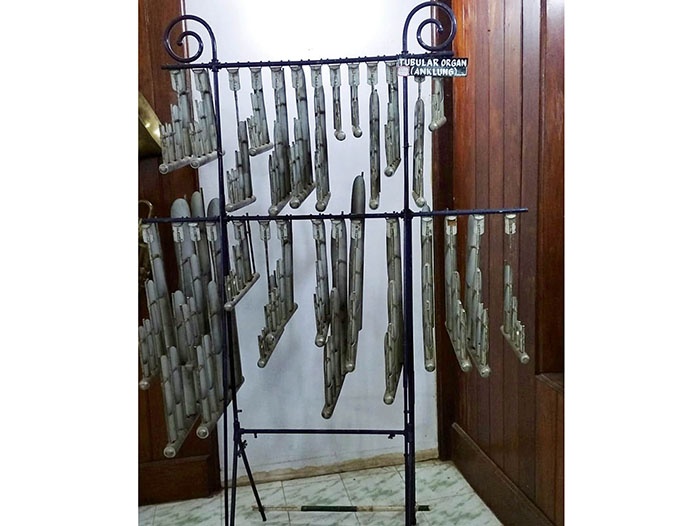
As the name indicates, these are tubular percussion instruments and are called Anklung or Angklung. The instruments are nothing but tuned bamboo slide rattle and are shaken to produce sounds. These instruments are called idiophonic instruments — whose sound is generated by striking, rubbing, plucking or blowing — and are said to have originated from Indonesia, made of bamboo.
These instruments are accompaniments where musicians perform along with the music troupes shaking Anklungs at the appropriate time in the melody. The instrument is played by one or two musicians who hold them in their hands and are shaken according to the tunes of the music ensemble. Generally, all the tubular instruments are mounted in a frame so that one or two players can play the entire set.
7. Xylophone
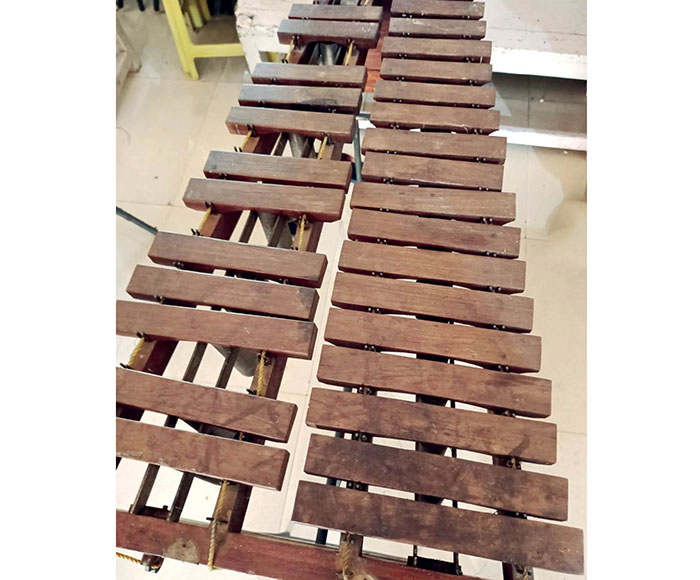
Also among the rare instruments at the museum is the Xylophone whose origins are difficult to trace. Though many historians say that the instrument originated in East Asia, many believe that they originate from Africa. Also, there are many versions of the Xylophone. While origins can be traced back to 2000 BC in China with 16 suspended wood bars, such instruments were also found in Central India called the ‘Ranat’.
Wooden bars are seated on a series of hollow gourds. When the bars are beaten with small sticks, the gourds below generate the resonating notes. Now in all the modern Xylophones, the hollow gourds have been replaced by metal tubes. In other words, wooden keys are mounted on a wooden frame on top of a series of metal tubes called resonators. When these wooden keys are hammered, the sound comes through the tubes.

Other special attractions
Apart from the seven rarest of the rare musical instruments, the museum houses various other instruments such as Clarinets, Trumpets, Saxophones, Piccolo, Flute, Oboe, French Horn, Circle Bass, Trombone, Euphoniums, Dilruba, Horns, Base Drums, Side Drums, Cymbals, Keyboards, Pianos, Violins, Guitars, Drum kits and Bassoon. Not only this. One has to take a look at the music library in one of the sections to believe the kind of books on music the Maharajas sourced. No country in the whole of Asia has such a wonderful library.
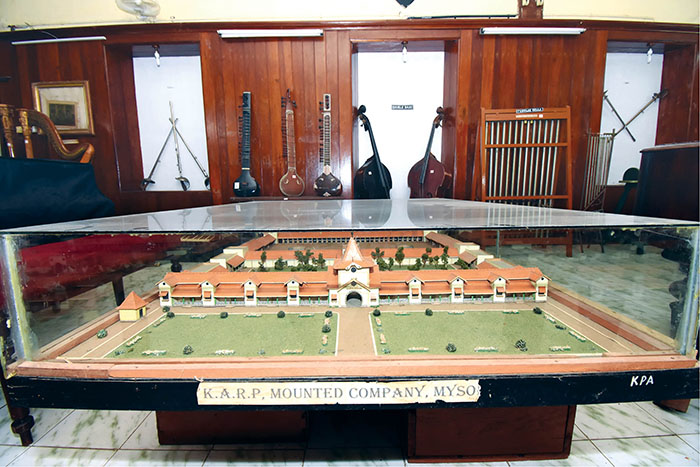
Pride of place in Mysuru
“Efforts are on to make the museum available for the public and as a tourist attraction. We have the intention of giving a new shape to the priceless collection of vintage instruments. People must know the different musical instruments used by the Maharajas who themselves were composers and great lovers of music. It is a gift from them and we have tried our best to protect them and we have summoned restoration experts to bring back the glory of many instruments. No modern instrument can match the sound quality of these instruments. The museum and its collection have a pride of place in Mysuru.” — Dr. Chandragupta, City Police Commissioner



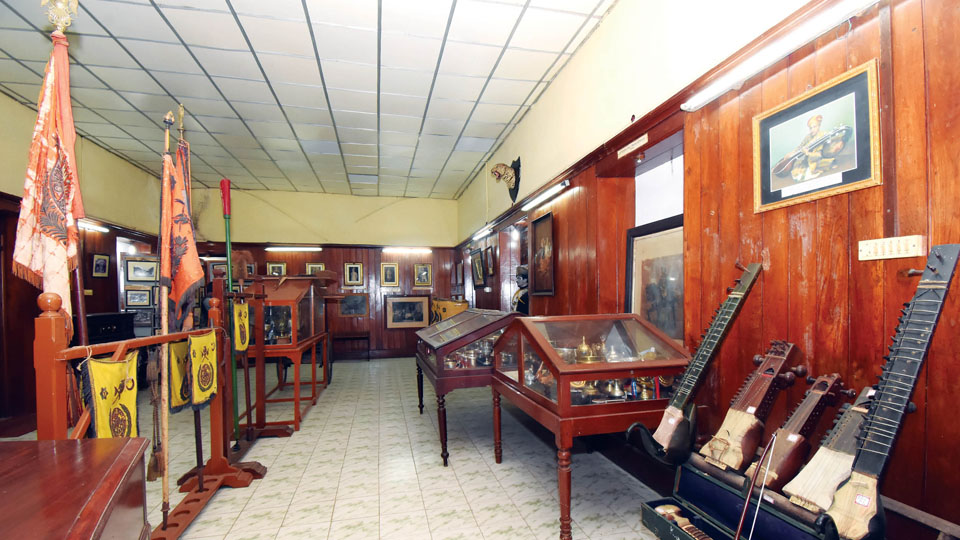




Recent Comments